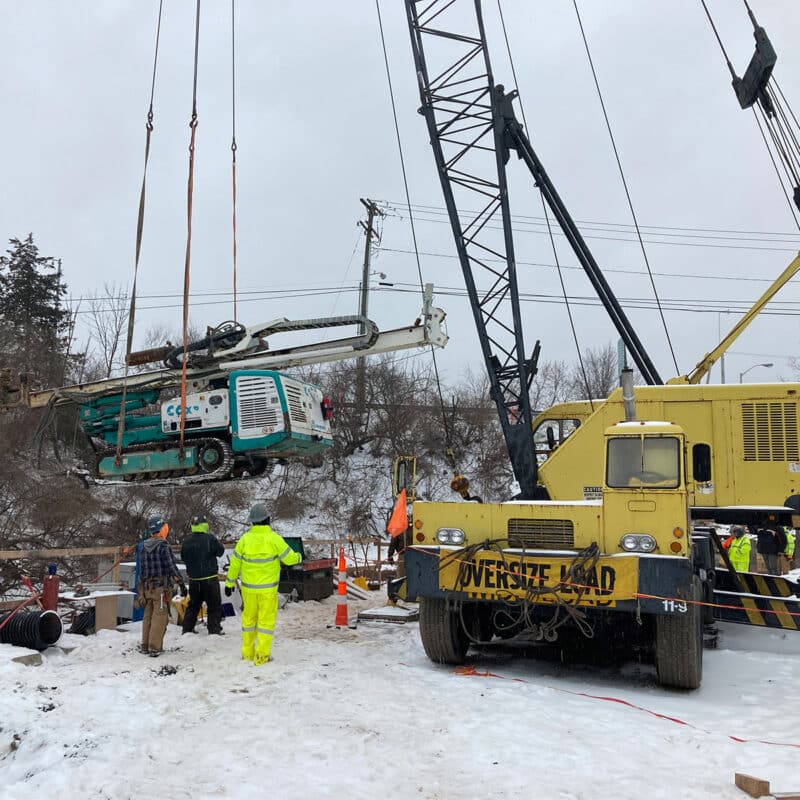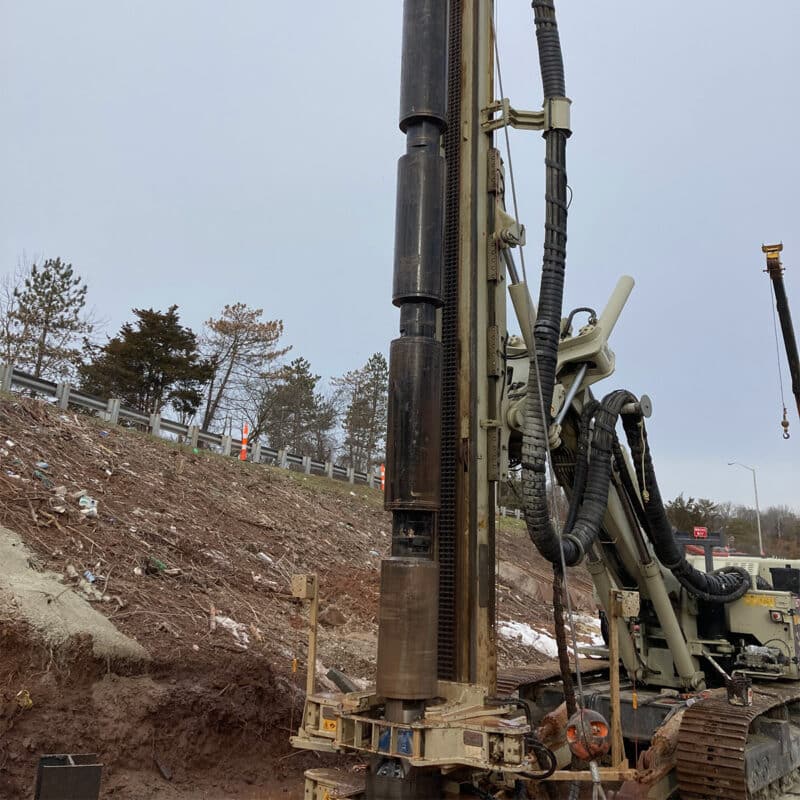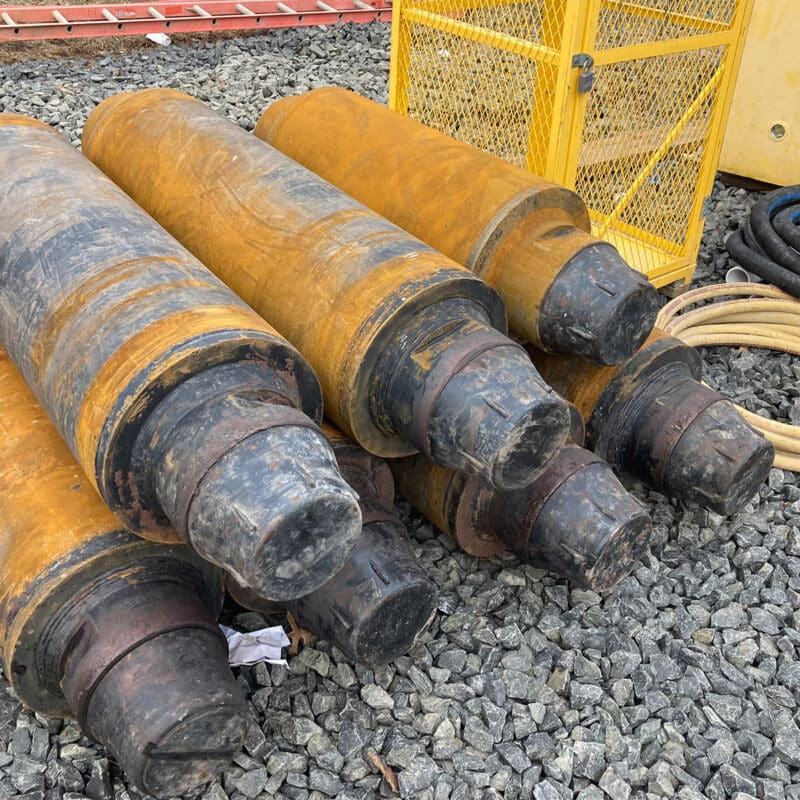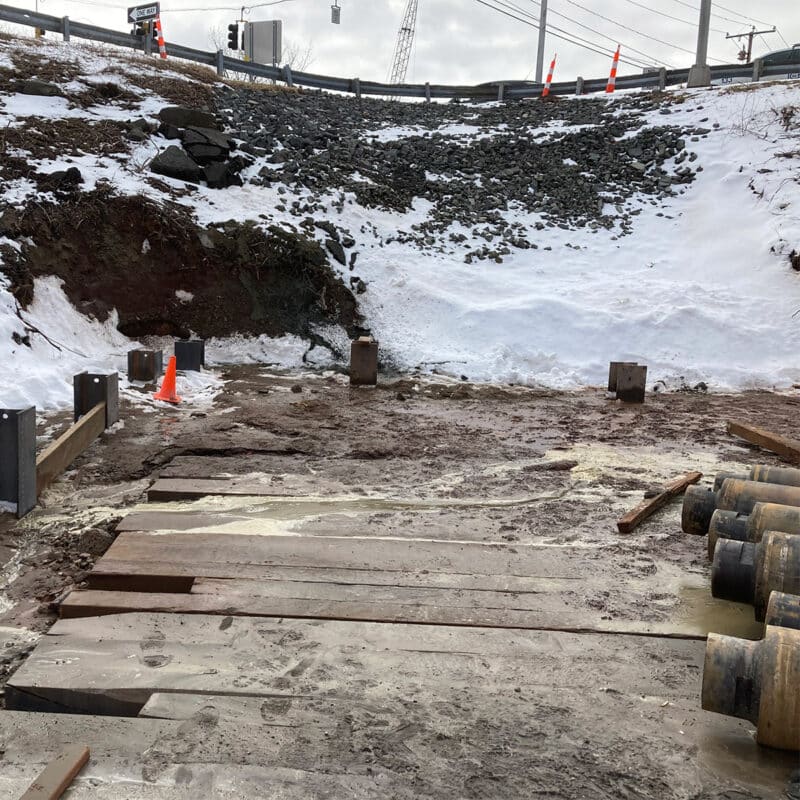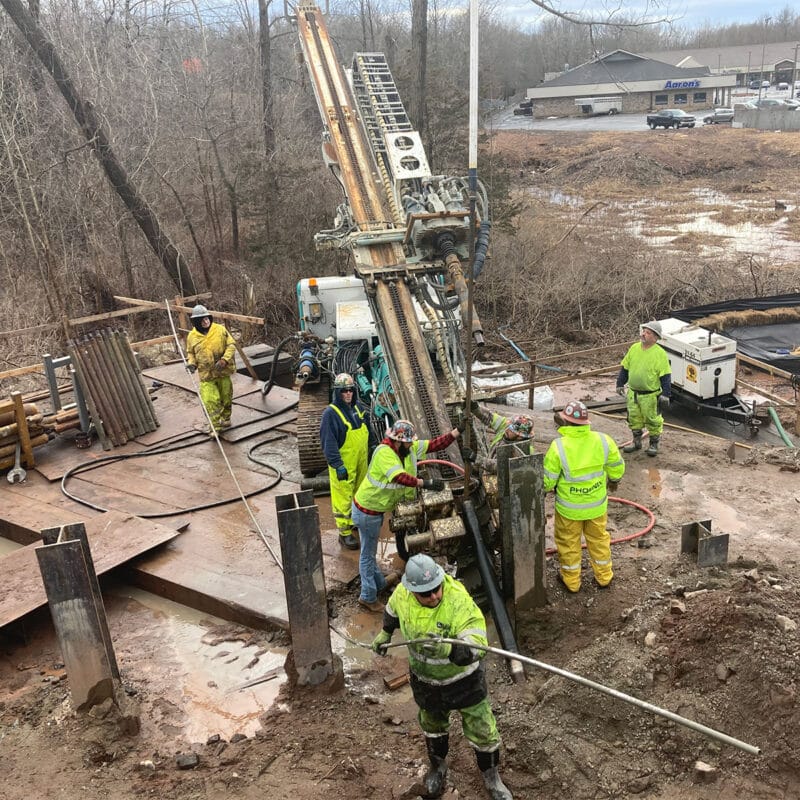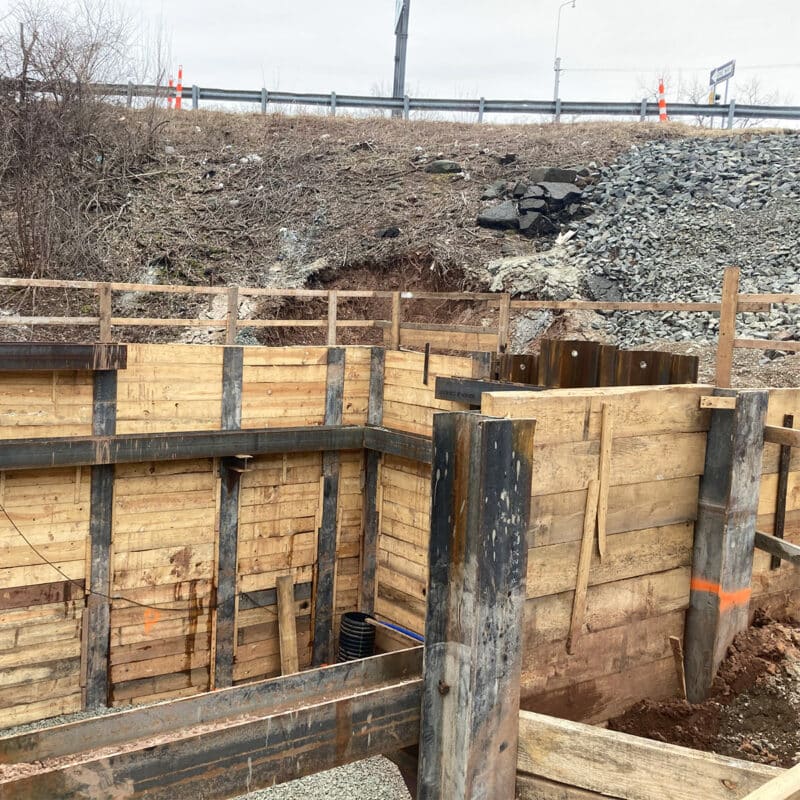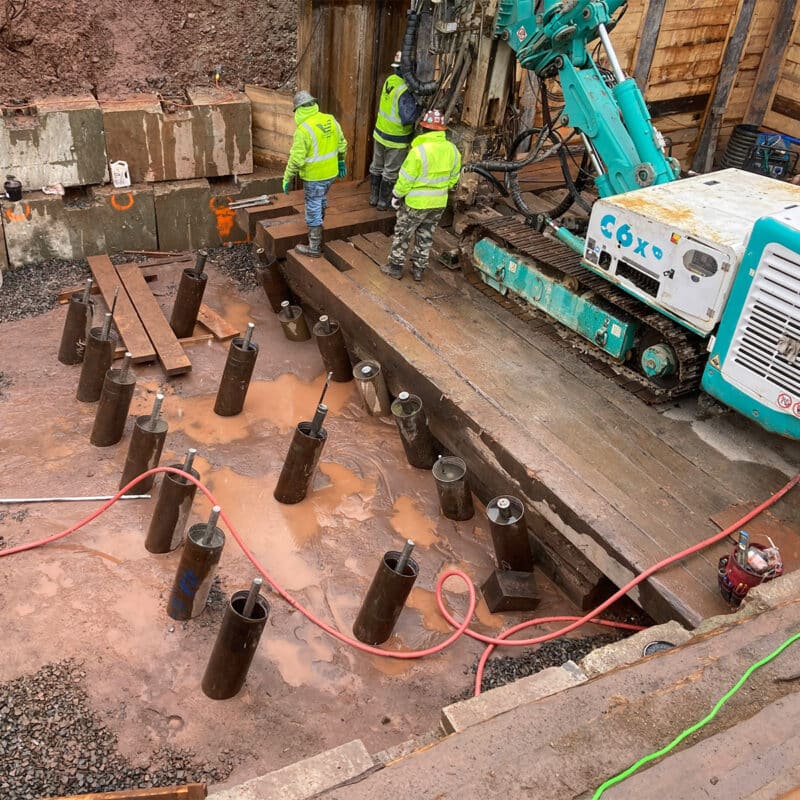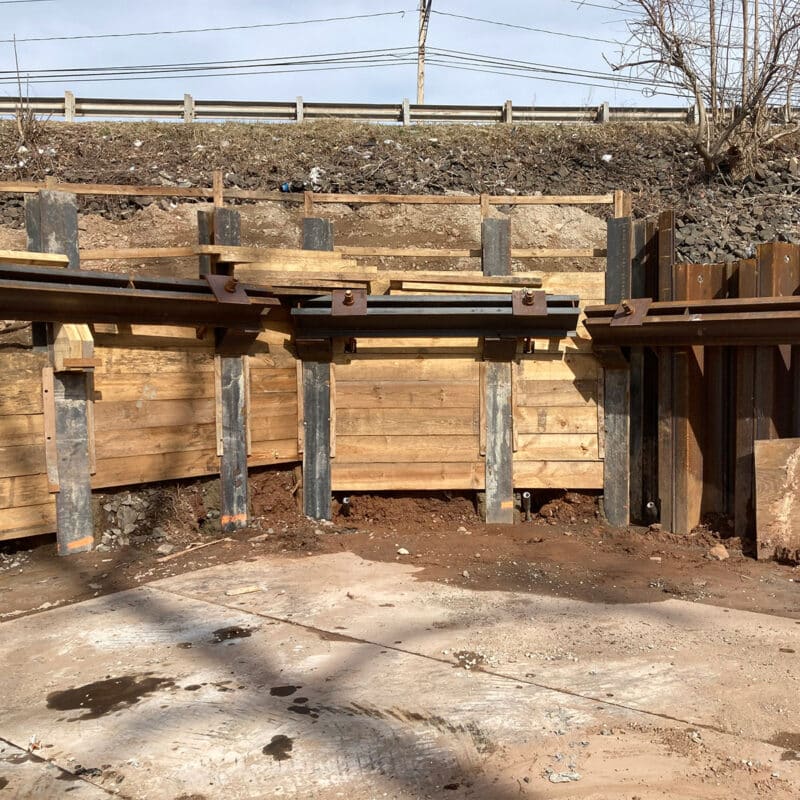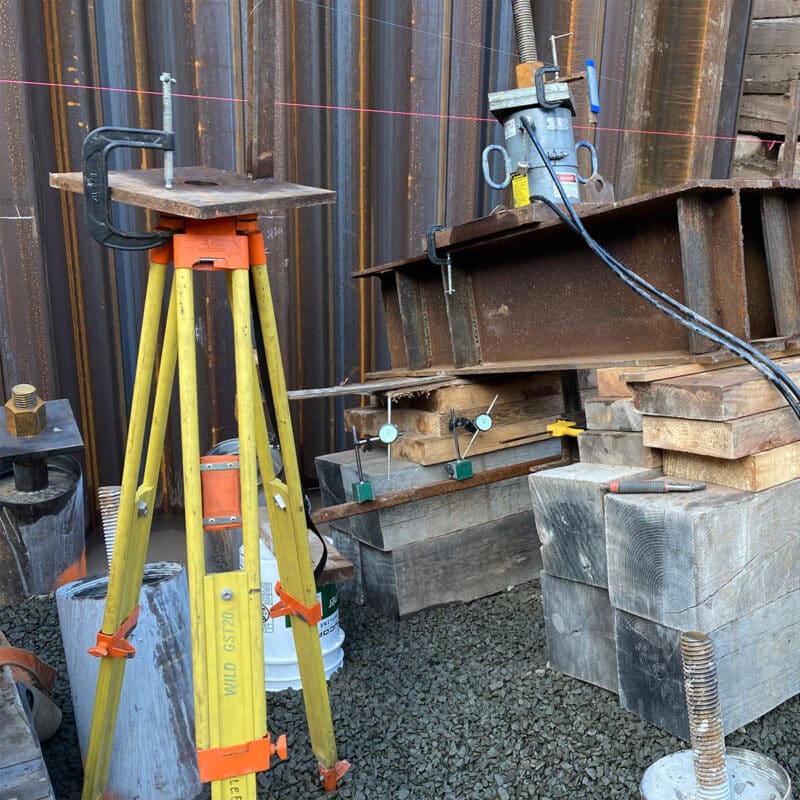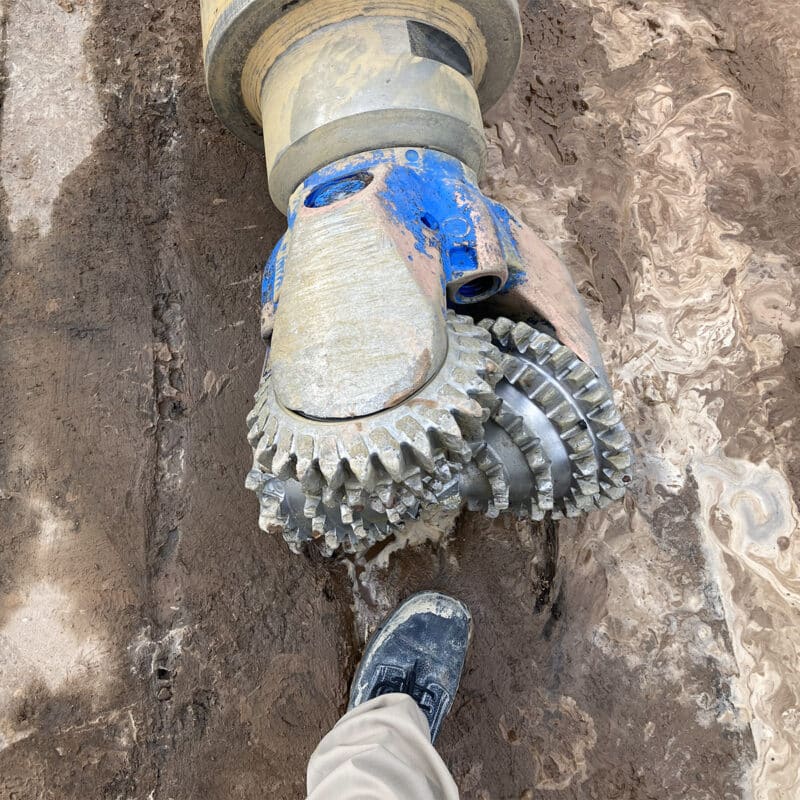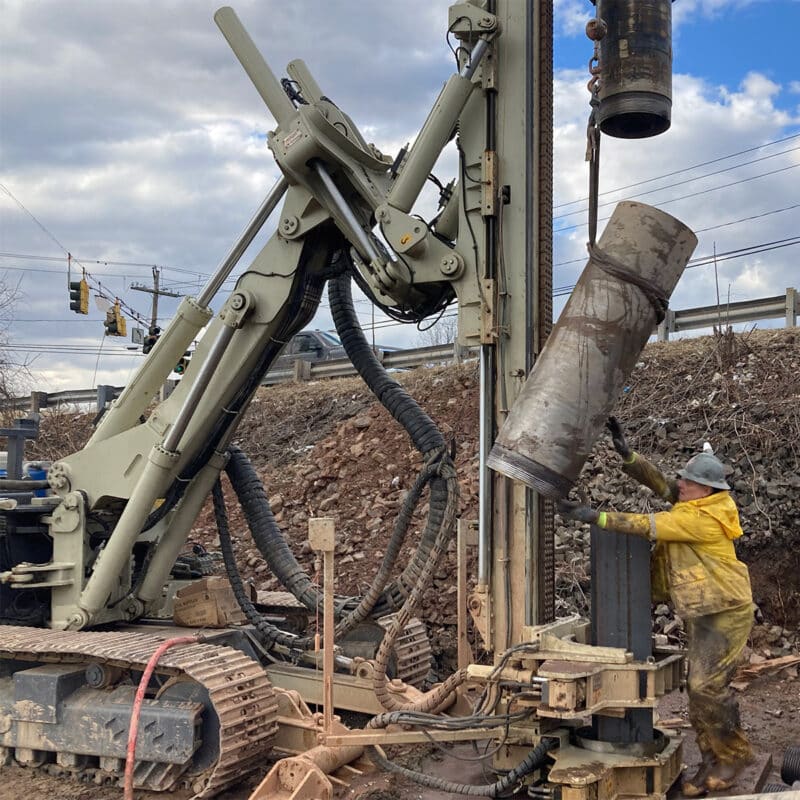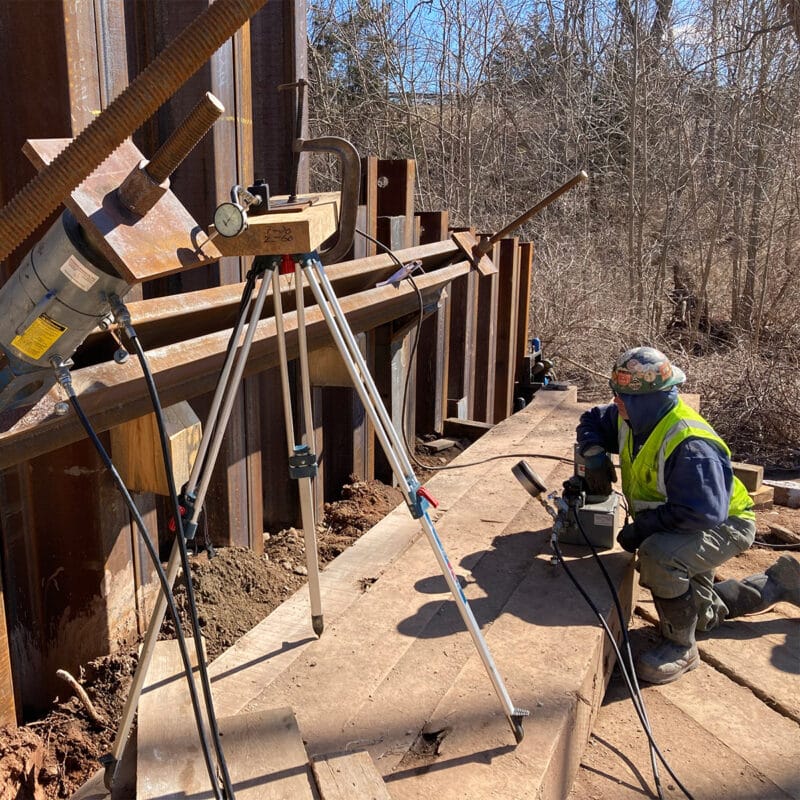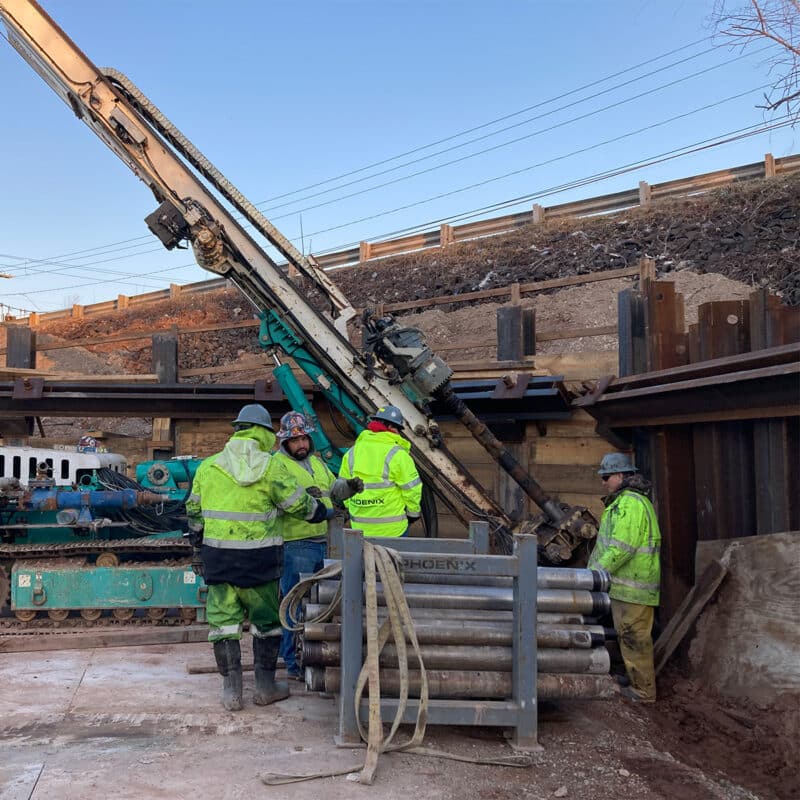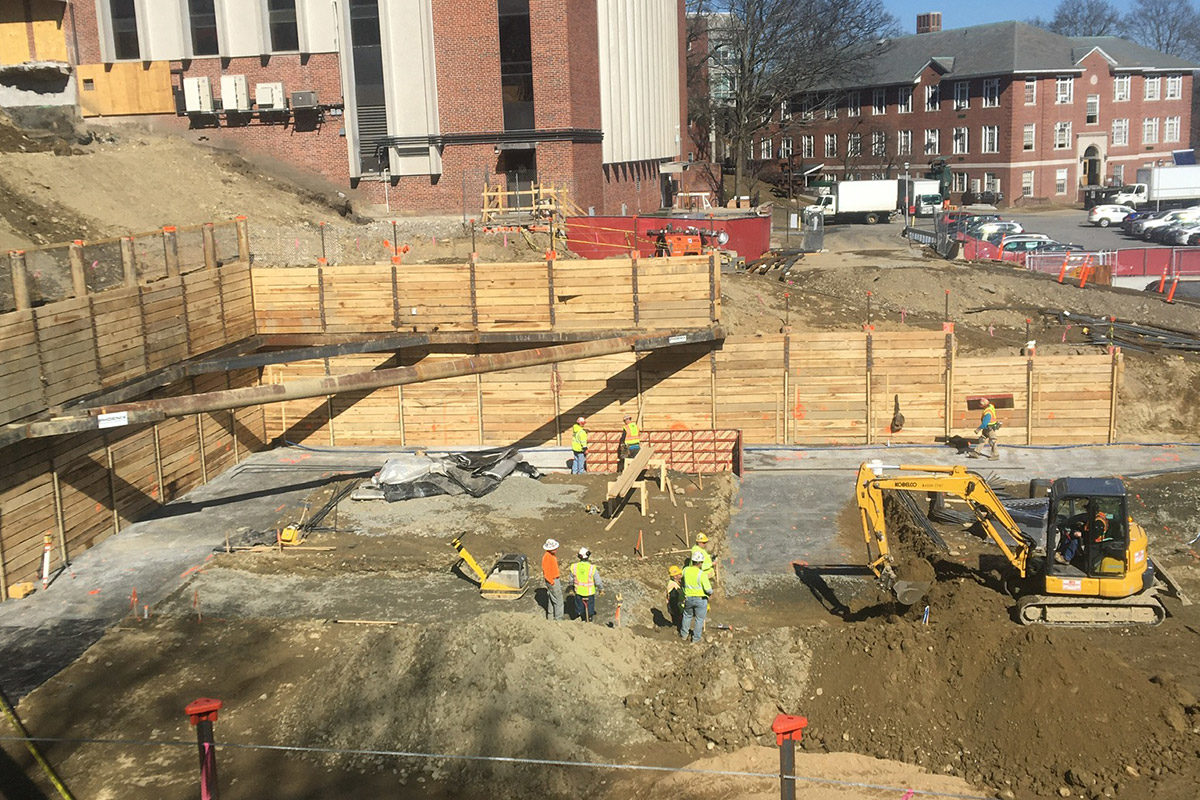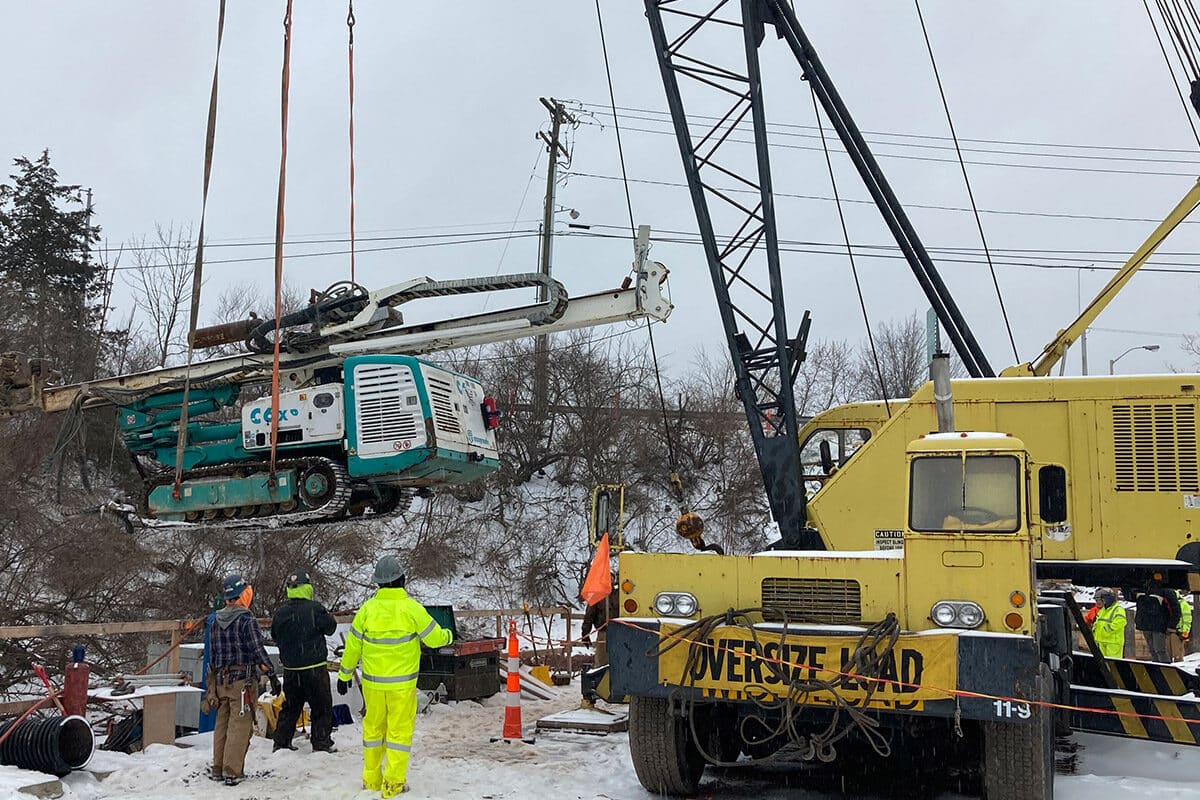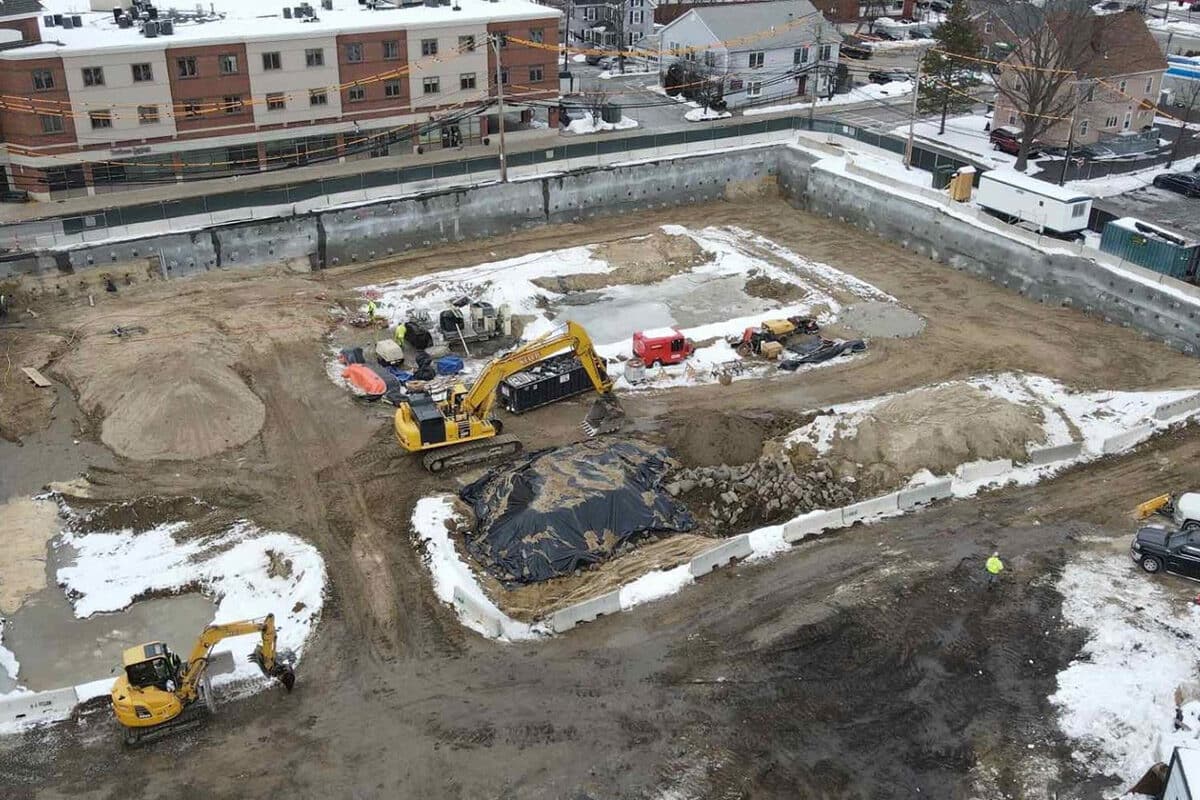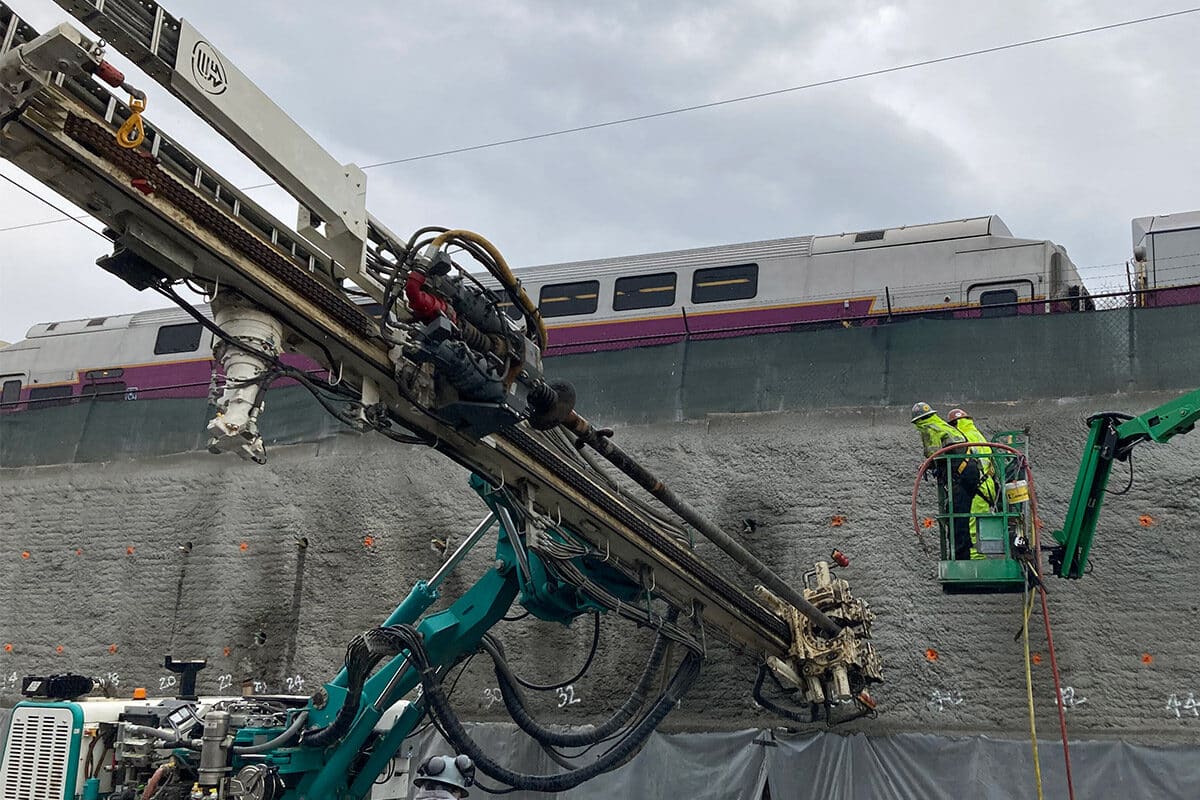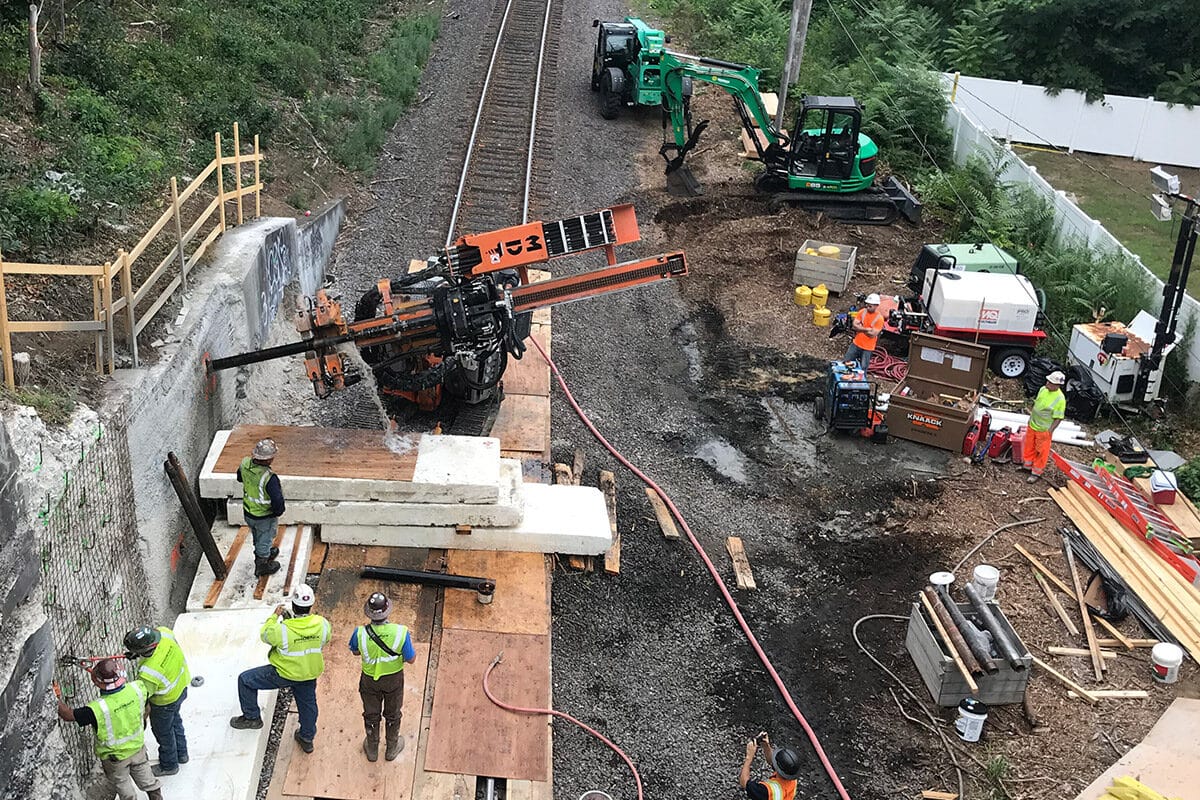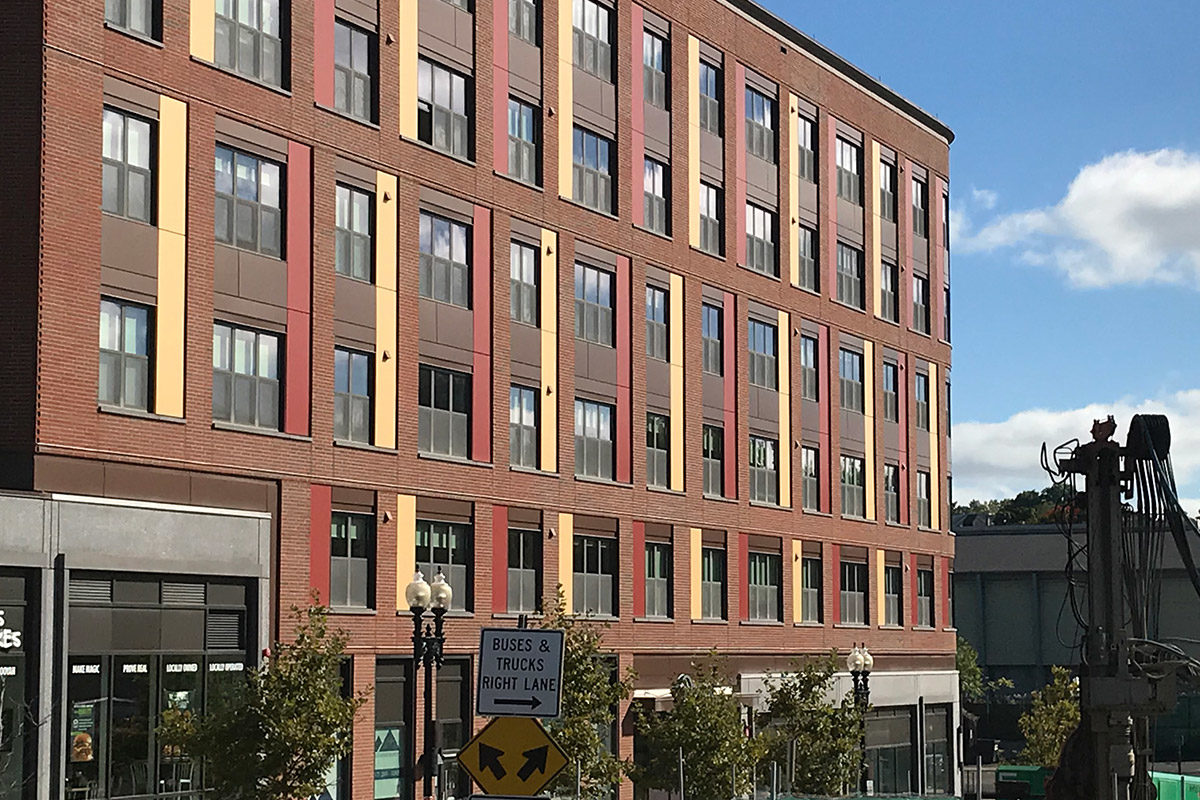PROJECT OVERVIEW
Phoenix Project #2120
In September 2021, Hurricane Ida dumped over 6 inches of rain in parts of southern New England. In Cromwell, CT, the excessive rainfall caused a large sinkhole to develop and compromised an existing 84-inch asphalt-coated corrugated metal pipe culvert running under Route 372. Rather than shutting down the busy road, the Connecticut DOT called for pipe jacking of a new pipe under the active roadway. This would require a number of work scopes to be designed and installed by Phoenix and GZA GeoEnvironmental.
First, Phoenix installed a series of drilled soldier piles as part of a support of excavation to facilitate access to the jacking and receiving pits. Once subgrade was reached at the jacking pit, a total of 18 drilled micropiles (“DMPs”) were installed at a batter to provide the reaction force for the pipe jacking equipment. When excavation reached the prescribed design elevation at the receiving pit, drilled tieback anchors were installed and locked-off through the SOE to provide additional reaction force for when the new pipe was jacked through it.
Soldier pile holes were a modest 20” diameter, allowing their installation to be performed with medium-sized drilling equipment due to limited access on site. Each hole was temporarily cased and advanced using wet-rotary drilling methods, terminating each borehole at a depth of five (5) feet into the bedrock. Steel H-piles were set into the temporarily cased holes, after which the socket was grouted with neat cement grout, and the pipe was topped with flowable-fill concrete.
As noted above, the DMPs were installed at a specified batter of 16 degrees. These piles were approximately 10 inches in diameter, and were socketed 15 feet into rock. As prescribed by the project specification, two of these production DMPs were proof tested prior to the construction of the reaction block. Tieback anchors on the receiving pit were installed in two tiers, with design capacities ranging from 100 kips to 140 kips per anchor.
Following the installation of the replacement pipe culvert, ground improvement would be conducted. Refer to the “Compaction Grouting” section of this website to learn how Phoenix successfully stabilized the soils underneath the active roadway.


